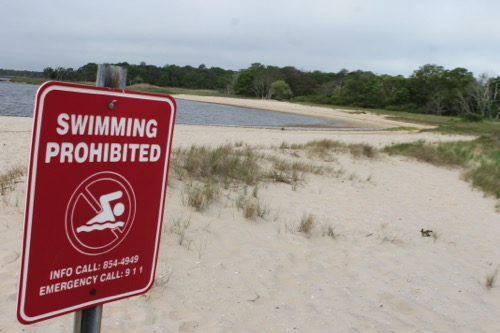From the Long Island Sound on the north shore to the bays on the south, from the bays and harbors of western Suffolk to the bays between the Twin Forks, the list of impaired waterbodies across Suffolk County is long and the impairments serious.
The State Department of Environmental Conservation has published for public comment a draft 2020-2022 Clean Water Act list of impaired waters. The comment period, announced in the agency’s Environmental Notice Bulletin yesterday, is open through Jan. 28.
No new Suffolk waterbodies were added to the list, which is updated every two years, but none was delisted for attainment of clean water standards.
Many of Suffolk’s impaired waterbodies are listed because levels of fecal coliforms and other contaminants, such as nitrogen, render the water bodies unable to support their best uses, as defined by State Environmental Conservation Law, such as drinking, bathing, boating, fishing, and shellfishing.
Many have been downgraded to the most impaired reporting category this year because existing water quality improvement plans “are not expected to achieve the water quality goals,” according to the list. Among them, locally, are Flanders Bay and its tributaries, Great Peconic Bay and its tidal tributaries, Reeves Bay and its tidal tributaries, Mattituck Inlet/Creek, and its tidal tributaries, Goldsmith Inlet and Quantuck Bay all of which were listed in 2018 for fecal coliform levels. (Quantuck was also listed in 2018 for nitrogen and low dissolved oxygen.) Also moved to the most impaired reporting category this year was Shinnecock Bay and Shinnecock Inlet, listed in 2010 for nitrogen.
Waterbodies are added to the impaired list when water quality data collected by the DEC demonstrate that there are violations of applicable water quality standards, best uses are not supported, and a “total maximum daily load” plan or alternative restoration strategy is required to mitigate the cause/pollutant. The violations must occur more than once and in more than one sampling year.
A waterbody is removed from the list if the state: determines water quality standards are being met, finds that there were flaws in the original listing, expects that pollution sources will be controlled, determines that impairment was not due to pollution.
Both the current (2018) statewide list of impaired waterbodies and the draft 2020 list can be accessed via links on this page of the State DEC’s website.
Public comments on the draft list should be emailed to the Bureau of Water Assessment and Management at: 4pwlinfo@dec.ny.gov or submitted by postal mail to:
Water Assessment and Implementation Section
NYSDEC, Bureau of Water Assessment and Management
625 Broadway, 4th Floor
Albany, NY 12233-3502
The survival of local journalism depends on your support.
We are a small family-owned operation. You rely on us to stay informed, and we depend on you to make our work possible. Just a few dollars can help us continue to bring this important service to our community.
Support RiverheadLOCAL today.































